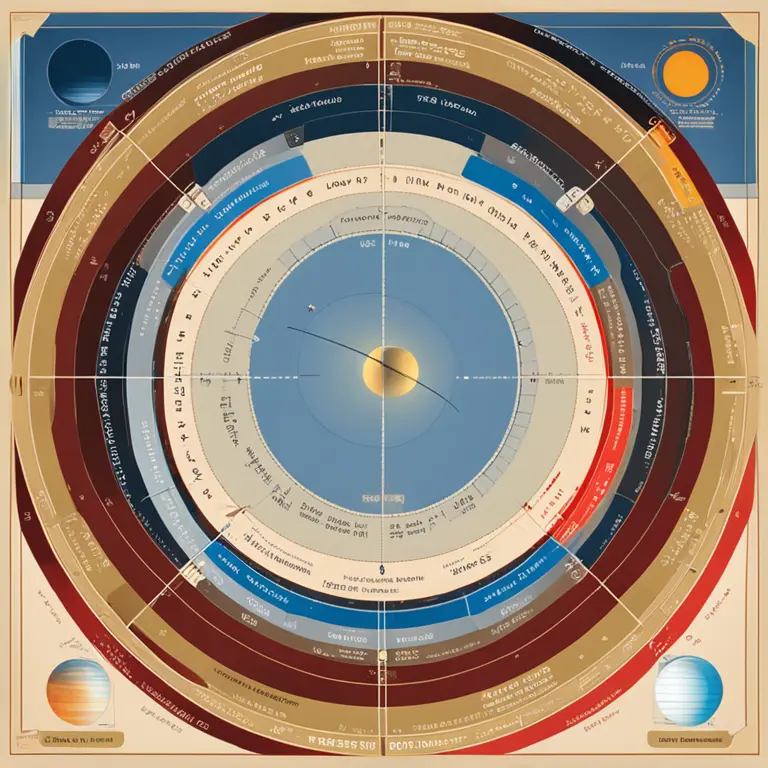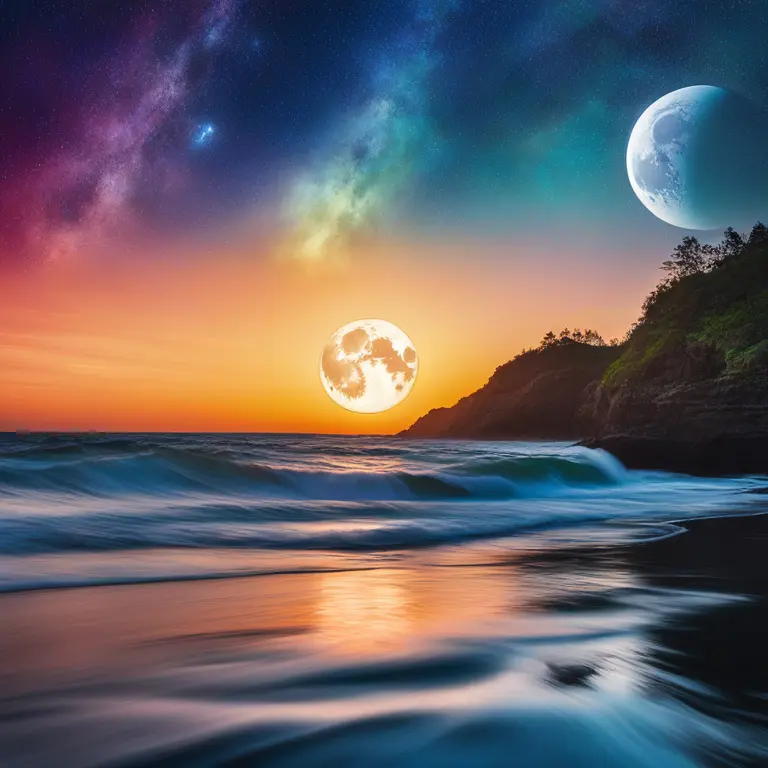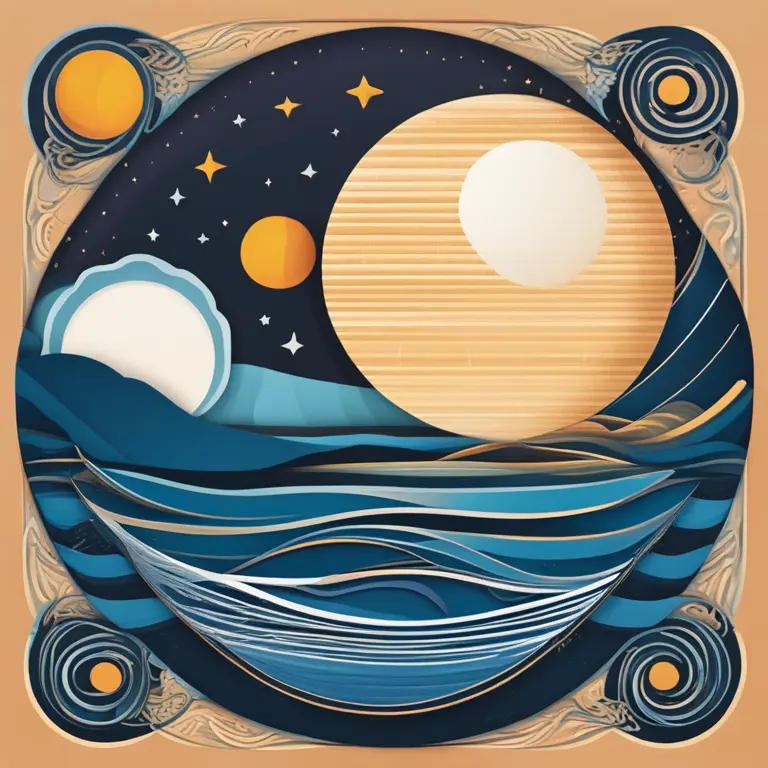
Moon Phases and Tidal Forces: Celestial Mechanics in Action
Delve into the fascinating relationship between the moon phases and their gravitational pull, resulting in the rhythmic rise and fall of Earth's ocean tides.
article by Priya Deshmukh
The Cosmic Dance of Moon and Ocean
The ever-changing ocean tides mark time along our planet’s vast shorelines. This rhythmic dance between the sea and land is a direct consequence of a larger celestial ballet performed by the Earth and the Moon. In this cosmic waltz, the Moon's gravitational pull plays the lead role in influencing the rise and fall of the ocean's waters. As the moon orbits our planet, its phases visually cue the shifts in tidal patterns. A full moon or new moon, also known as "spring tides," characterize the most significant tidal extremes, while the first and third quarters, or "neap tides," show the least tidal variation.

Gravitational Symphony and Tidal Variation
Gravitational forces are the conductors of this symphony, with the moon and the sun as the primary musicians. The Moon, being much closer to Earth, exerts a stronger influence on our planet's tides than the distant Sun. However, when the Sun, Moon, and Earth align during the new and full moon—resulting in those spring tides—we observe the highest high tides and the lowest low tides. Conversely, during the quarter moon phases, when the Sun and Moon form a right angle relative to Earth, their gravitational pulls partially cancel each other out, producing the milder neap tides.

Perigee, Apogee, and Tidal Extremities
Delving deeper into the moon's influence on tides, we find that its elliptical orbit around Earth also affects tidal ranges. Approximately once a month, the moon reaches perigee, the point in its orbit closest to Earth, enhancing its tidal impact. In contrast, at apogee, when the moon is farthest, its gravitational pull—and thus its tidal influence—is weakened. When a spring tide coincides with the moon's perigee, we experience what is commonly called a "perigean spring tide," which can lead to even more dramatic high and low tides.

Astrological Tides and Personal Impact
Astrologically speaking, the moon is more than just a gravitational force; it governs emotions, intuition, and the subconscious. In 2024 and beyond, many will look to the moon's phases as guides for personal growth and understanding. During full moons and new moons, individuals may experience heightened emotional states, encouraging reflection and release. Similarly, the oceans' tides serve as a metaphor for life's ebbs and flows, inviting us to embrace change and accept the natural rhythm of our existence.

Scientific Predictions and Astrological Projections
As a celestial body that influences both the physical world and the astrological realm, the Moon's phases allow for a unique blend of scientific predictability and esoteric potential. Scientists can accurately predict tide times and heights, facilitating nautical navigation and coastal activities. Astrologers, in turn, interpret the moon's phases to offer personal insights and guidance, charting a course for spiritual navigation. By understanding the mechanics behind the moon's phases and their effects, we can better prepare for both the tangible and intangible tides of life.
Towards a Harmonious Coexistence
As we approach the future, our understanding and appreciation of the moon's role in our lives continue to expand. Technological advancements and growing astrological interest converge, enhancing our knowledge of the tides and the moon's phases. As we heed the natural cues from our celestial neighbor, we learn to live harmoniously with the cycles that govern our planet and the subtle influences they have on our collective consciousness.
Published: 1/19/2024
Modified: 1/19/2024
More predictions
Come back here soon to learn more about yourself and your future


How Moon Phase Influences on Relationships?
Discover how the lunar cycle can impact your connection with your boyfriend and what each phase may hold for your love life.


Moon Phases & Zodiac Connections
Delve into the mystical entwinement of the lunar cycle and zodiac signs and their collective impact on human ebbs and flows.


About Moon Phases & Relationship Dynamics
Explore how the changing phases of the moon can influence your connection with your boyfriend and potentially impact your relationship.